For me, hiking and photography almost go hand in hand. Sure, I do a lot of photography that doesn't involve hiking, but a good chunk of the photography I enjoy involves hiking. While I love hiking, it can ruin a photography trip if you run into trouble on the hike. Whether it is just being uncomfortable or facing unforeseen situations, unprepared hiking can cause problems that keep you from getting the shot you want or can discourage you from making that next trek out to a new location. A while back, I worked with fellow Improve Photographer writer, Nathan St. Andre, to offer some helpful (hopefully) tips for the hiking photographer. In this article, I want to share with you my favorite gear I use for everything from a short hiking trip to an overnight trek. My hope is you will find something that solves a problem you may be experiencing or something that adds a little comfort to help you enjoy your next outing. Let me know your favorite hiking gear or something you are pining for in the comments.
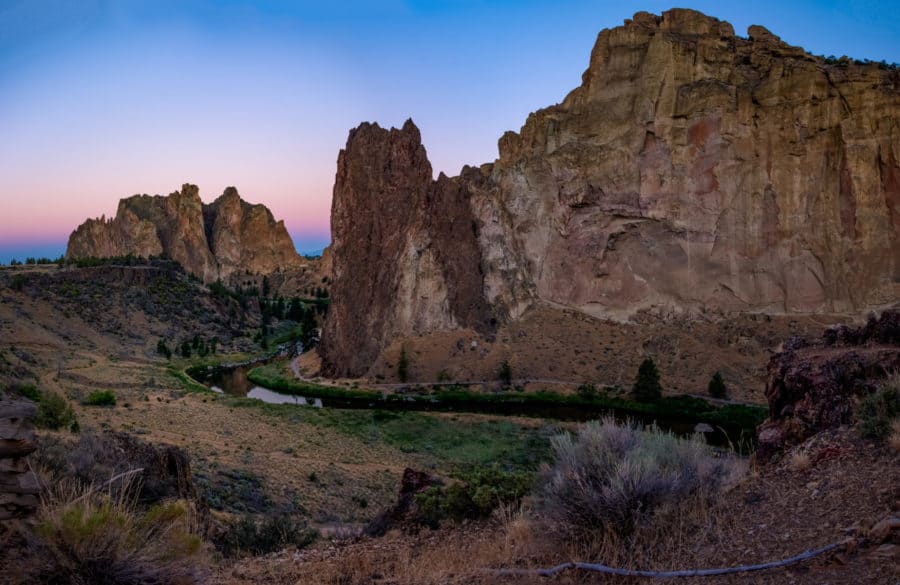
-
A Good Backpack
A good backpack makes all the difference when hiking, especially if you are going long distances. I have tried out more than a dozen different camera backpacks for hiking and there are a few things that really matter to me. First, and most important, is comfort. For this, a good bag designed for hiking is a must. If you are going on a multi-day trek, you may need a more dedicated backpacking bag, but I am going to focus just on camera backpacks for this article. Second, the size of the bag is going to depend on what kind of hiking you do, but I prefer a bigger bag with lots of room to carry everything I want so I don't have to leave something behind that will make my experience more enjoyable. Finally, I want a bag that makes sense, meaning easily accessible gear, a good tripod holder and good organization.
As of right now, my favorite hiking backpack is the Lowepro Whistler BP 450 AW. This bag can fit a ton of gear. I recently took it on a trip to Idaho and I easily fit all my camera gear and five days worth of clothing and other gear. It is also designed really well to attach all kinds of hiking or camping gear to the outside of the bag to maximize space. I always bring carabineers with me to make it even easier to attach things to any backpack.
This bag is very comfortable. It is definitely one of the most comfortable bags I have used, despite being one of the biggest. It has a nice padded back and great shoulder straps that fit very comfortable on me. I also like the chest strap and waist strap. I especially love that they put an easy access pocket on the waist strap as this is something so easy and convenient, but surprisingly isn't offered on as many bags as I had anticipated.
The front of the bag has a big open pocket, that is great for shoving in all your bulkier, non-camera items, or just for packing clothes. There is another fairly large zippered pocket on the inside that works well for holding a lot of the smaller items you may have. I used that pocket for my charger, lenspen, memory card wallet, remote, lens cloths and 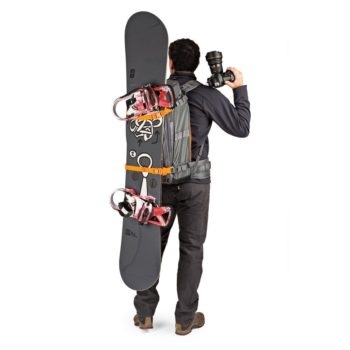 quick release plates.
quick release plates.
There are also special pockets on the inside for memory cards. They would work great for memory cards, but I keep my memory cards in a separate wallet so they were not useful for that to me. They were, however, just big enough for spare batteries, which I really like in a bag. While they were adequate for extra batteries, they were not the most convenient as they have a fold-over top that is difficult to maneuver on and off the batteries.
One of my favorite pockets on this bag is at the very top. It is very easy to access and is bigger than you would think so it can fit quite a bit of the gear that you want easy access to. The main compartment is set up like most any other camera backpack and is easy to adjust. One thing I have not seen on other bags is that some of the dividers have little pockets inside them so you can pack smaller items to keep them extra safe with lots of padding if you want.
Overall, I have really enjoyed this bag and can definitely recommend it as a good solid hiking bag. Anyone else out there using this bag have an opinion on it or have another hiking bag to recommend.
-
A Light Tent or Camping Hammock
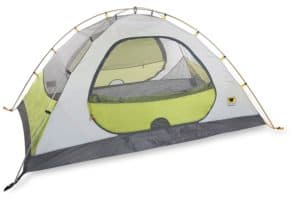
I am going to be honest. I hate my backpacking tent. It is too heavy and not very quick to set up, but I still use it because a good backpacking tent can cost a pretty penny and I just haven't been able to pull the trigger yet. I am confident a good tent will make your overnight hiking trips much more enjoyable because I know that it would help me.
Of Course, you want to find a tent that is light as possible to reduce your load. Be cautious though because you can find light tents for cheap, but they won't protect you much from the elements. You want a tent built well enough to protect you from the wind and rain if necessary. Unless you are going to be camping in the snow, opt for a three-season tent as it will keep you comfortable in most situations. You can also save weight with a non-freestanding tent that doesn't have poles. I don't think it is worth it though. The last thing I want to do after a long day of hiking is to try to fiddle with stakes, lines and whatever else might be required. Although I don't have a tent I can recommend, here are two that I have been eyeing as they look like great options and have been highly rated. The more budget one from Mountainsmith can be seen here on Amazon, and the high end tent from Nemo is here on Amazon.

One of the reasons I haven't invested in a good hiking tent is because I love using a camping hammock. I have used a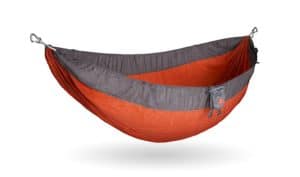 handful over the past fifteen years and my favorite is this hammock from Kammock, along with the python straps. One of the great things about a camping hammock is that you can easily hang it from the outside of your backpack and it takes up very little space and adds very little weight. It is also so simple and quick to set up, assuming you have trees. Unfortunately, I live in the desert so I can't use it much here, but I also don't enjoy camping in the desert so it does not matter much anyway. I love hiking and camping in forests and there are always trees to use with the Python Straps. The Kammock is quite big so there is plenty of room to comfortably sleep. The real downside for me is that I prefer to sleep on my stomach and you cannot comfortably do that in a hammock, but I make do sleeping on my side. One other thing I love about the Kammock is that it has extra material that you can throw up over the top of you so you don't necessarily need to haul an extra shelter or mosquito net. If I was camping somewhere with a lot of mosquitoes though, I would definitely opt for one.
handful over the past fifteen years and my favorite is this hammock from Kammock, along with the python straps. One of the great things about a camping hammock is that you can easily hang it from the outside of your backpack and it takes up very little space and adds very little weight. It is also so simple and quick to set up, assuming you have trees. Unfortunately, I live in the desert so I can't use it much here, but I also don't enjoy camping in the desert so it does not matter much anyway. I love hiking and camping in forests and there are always trees to use with the Python Straps. The Kammock is quite big so there is plenty of room to comfortably sleep. The real downside for me is that I prefer to sleep on my stomach and you cannot comfortably do that in a hammock, but I make do sleeping on my side. One other thing I love about the Kammock is that it has extra material that you can throw up over the top of you so you don't necessarily need to haul an extra shelter or mosquito net. If I was camping somewhere with a lot of mosquitoes though, I would definitely opt for one.
-
Sleeping Bag
A good hiking sleeping bag is the only other item on this list I have not personally invested in. I know, a tent and sleeping bag should be the most basic things to have, but they were also the things where I already had workable options so I didn't HAVE to buy one yet. I am sure I will get a good one soon, but for now, I deal with the extra weight and size of my older bag.
A good sleeping bag for hiking is usually going to be the mummy style, low weight, and compact. Like with the tent, you are probably best getting a three season bag, but summer or winter bags can be better depending on the conditions you are going to be sleeping in. As for insulation, I personally prefer down to synthetic as it tends to pack more punch in a smaller package and works great as long as you don't get it wet. I have never had that issue, but if you are going to be hiking in the rain at all, go synthetic as it will dry faster and keep you warmer when wet. The last big thing I look at for a bag is the width and length. I personally like to get a little more room to move in the bag, even though it means carrying a little extra size and weight. There are a ton of quality hiking bags out there, but the two I currently have my eye on are the Kelty Cosmic on the lower end and Western Mountaineering on the higher end.
-
Sleeping Pad
If you aren't sleeping in a hammock, you will want something to sleep on unless you are more willing to rough it than I am. Nothing ruins a backpacking trip for me like sleeping on a rock and waking up feeling sore and tired. I have tried a handful of sleeping pads over the years from the heavier thin foam pads to air mattresses. Without a doubt, I have a favorite pad to recommend to you that I absolutely love as it is the perfect combination between comfort, 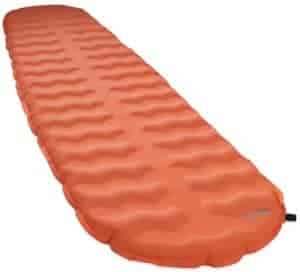 compactness, and weight.
compactness, and weight.
The Thermarest EvoLite Plus is a self-inflating pad that is a combination of an air mattress and foam pad to provide the best of both features. The self inflation works very well and is easy to adjust for how firm you want the mattress. The small amount of padding in it is really nice as it makes it more comfortable that just an air mattress. I got the bigger version of the pad and it was long and wide enough for comfortable relaxing, which can be hard to find in a compact mattress like this one. I honestly cannot recommend this mattress enough and have used it for so much more than just backpacking or camping. It works great for sleeping in the car. I use it all the time as a spare mattress for kids sleeping over (or nearly every night when my four-year old decides she needs to sleep in my room). I even took it to the hospital when my wife had our last kid to make the fold-out bed at the hospital more comfortable. See more Sleeping Bags
-
Pillow
I used to skip a pillow when I was low on space, just using rolled up clothes instead; however, as I have gotten older and my body has gotten creakier, a pillow is now a must. I use the Thermarest Air Head Pillow because it is compact and easy to inflate. I don't typically like inflatable pillows, but this one is very soft and has some separate padding inside so it is more comfortable. While that does make it a little bulkier, it is still super light and easy to hook on a backpack.
-
Clothes
If I am going to be honest, I am just really not picky about hiking clothes. I mainly just hike in something that is light, comfortable and breathable. The most important thing for me here is to hike in layers. This is especially important for photographers because we spend a lot of time after a hike standing around making images so you want to have layers to add when you are done moving, but you don't want to get soaked in sweat on the hike only to freeze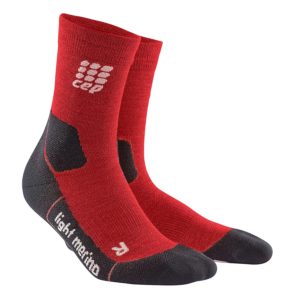 while standing around in wet clothes while shooting.
while standing around in wet clothes while shooting.
The one piece of clothing I am picky about is my socks. Comfortable socks and shoes go a long way toward keeping you happy while hiking. You want to avoid blisters, sweaty feet or wet and cold feet. My go-to hiking socks are the CEP compression socks. I love these socks because they fit snug so that there is no sliding around, which helps prevent blisters. They are also merino wool, which is a must to me. I like to get my feet wet a lot while hiking in order to get the compositions I want. Wool socks make all the difference because they still keep your feet warm even when wet. They also don't get soggy and uncomfortable. I have often hiked for hours with wet shoes and socks without being uncomfortable at all. The downside to wool (in warmer months) is that it usually means very warm as well. The light merino wool on these socks is thin and does not overheat. I use these socks even in the Vegas summer without my feet getting too hot.
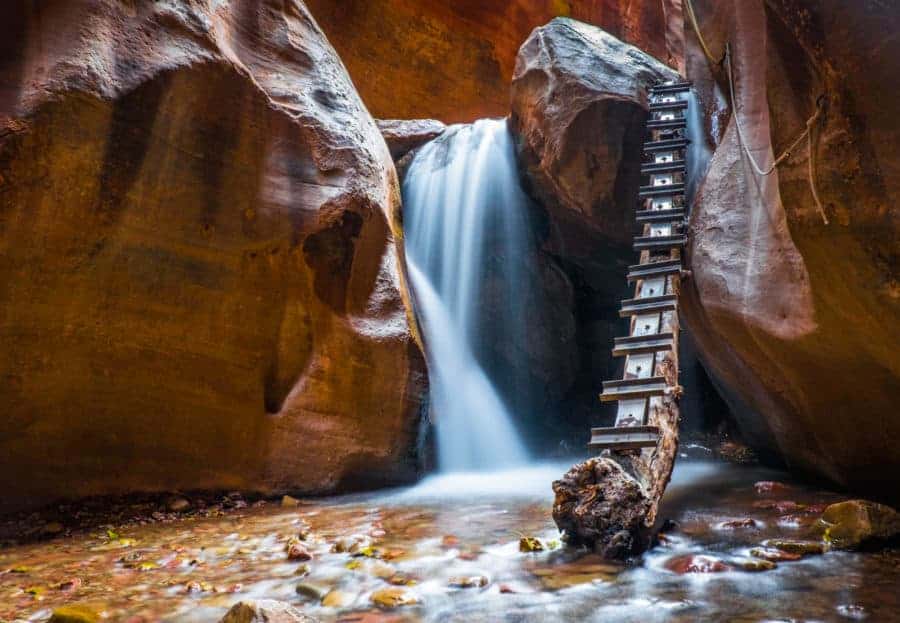
-
Good Hiking Shoes
Except for possibly the backpack, shoes are the most important hiking equipment I own. I have been hiking in just about everything: traditional hiking boots, tennis shoes, running shoes and sandals, but I would not recommend anything other than a trail runner or active hiking shoe. I feel like they offer the perfect combination between a hiking boot and running shoe.
The shoe I am using right now is the absolute best hiking shoe I have ever used. It is the 9.81 Trail Pro from Garmont. I have the version II shoe, but they currently are on version III. This shoe is very comfortable. I have used these as my only shoes on multiple family vacations where I am packing light and the vacation will involve hiking. They worked great whether I was hiking through the mountains or walking through the city. Unlike a hiking boot, they can double as just a regular shoe as well.
Other than the overall comfort, my favorite thing about these shoes is their insane grip. I am often jumping from rock to rock and trekking over wet, slick rocks and I have never felt a more sure grip than with these shoes. The Gore-Tex at the base of the shoes is awesome as I have trekked through mud and water and my feet did not get wet until the water was deep enough to get over the Gore-Tex, which was at least a couple inches.
Something unique about these shoes are the laces as they lace all the way down almost to the toes. I really appreciate this feature as it helps keep the front of your feet from sliding around and is especially nice when hiking downhill as it keeps your feet from sliding to the front of the shoes. I found this especially beneficial when hiking the steep trek down misery ridge at Smith's Rock.
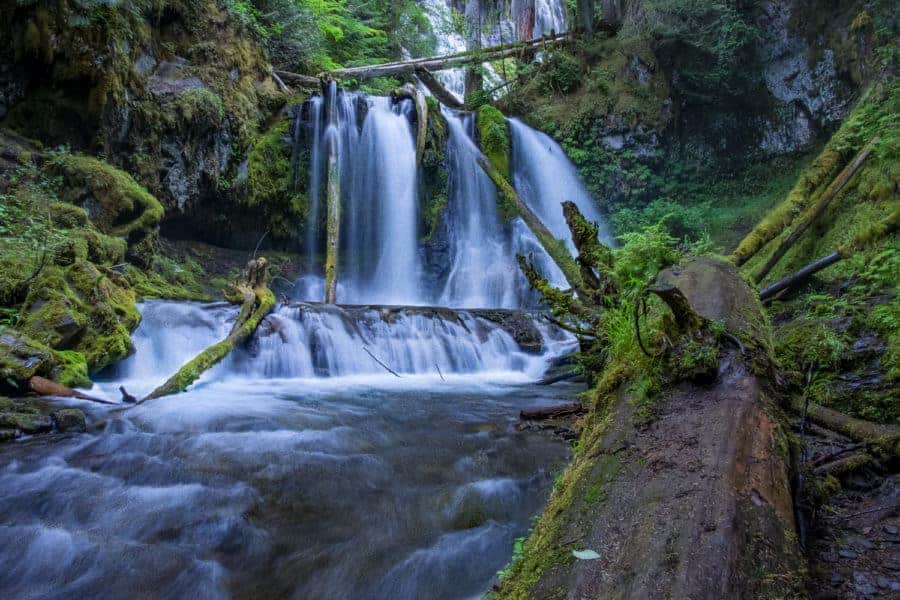
-
Camera Strap
If I am honest, I used to go back and forth on bringing a camera strap when hiking. Part of me liked having the strap to use when I wanted the camera easily accessible, but that became less necessary with the Peak Design clip (below) 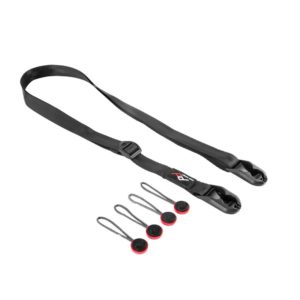 and was also additional bulk to shove into the backpack with the camera. This changed when I got my hands on the Peak Design Leash and Cuff. This duo works awesome for hiking because they are so thin and take up almost no space. The Peak Design Slide was my favorite strap for a while because it was so convenient to take on and off and to adjust and because it could switch between a regular strap and a sling strap. The leash offers all those advantages at a third of the size and fraction of the weight. The cuff can also be nice for carrying the camera off your neck when hiking somewhere where you are shooting a lot or need to be ready for wildlife. I have found myself using a camera strap so much more frequently since I got the leash as I love the size, convenience and comfort. You can find it on Amazon or check out Peak Design.
and was also additional bulk to shove into the backpack with the camera. This changed when I got my hands on the Peak Design Leash and Cuff. This duo works awesome for hiking because they are so thin and take up almost no space. The Peak Design Slide was my favorite strap for a while because it was so convenient to take on and off and to adjust and because it could switch between a regular strap and a sling strap. The leash offers all those advantages at a third of the size and fraction of the weight. The cuff can also be nice for carrying the camera off your neck when hiking somewhere where you are shooting a lot or need to be ready for wildlife. I have found myself using a camera strap so much more frequently since I got the leash as I love the size, convenience and comfort. You can find it on Amazon or check out Peak Design.
-
Peak Design Clip
I learned about the Peak Design CapturePRO Clip reading Outdoor Photography soon after I got my first DSLR. I received my first clip many years ago as a present from my wife. I used that one a lot, but I have to say the new model is much nicer. I started off using the clip on my belt a lot and that worked really well. It wasn't always comfortable with a heavier camera, but was workable and better than using a strap when hiking. I then started attaching it to my shoulder strap and that works well too, but I still felt like my camera was a little too bulky and would dig into my armpit. Lately, I have been attaching the clip and my camera to the waist strap on my backpack and I really like it there. It doesn't add any extra burden, but ensures my camera is always easily accessible in case I see wildlife. This is definitely my preferred method of carrying.
In addition to freeing up more space in my camera bag, using the Peak Design clip, I also realize I stop for a lot more 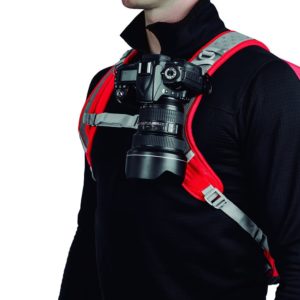 images that I would have lazily passed by if it required setting down my bag and getting my camera out. It also makes me more confidant if I am in an area where I might come across wildlife. Without the clip, I have missed more than a few shots trying to get my camera out of the bag without scaring off whatever animal I have come across.
images that I would have lazily passed by if it required setting down my bag and getting my camera out. It also makes me more confidant if I am in an area where I might come across wildlife. Without the clip, I have missed more than a few shots trying to get my camera out of the bag without scaring off whatever animal I have come across.
One plug I have to share for Peak Design. Last year, while I was still using my old clip, I was loosening it while hiking in Glacier National Park and I accidentally lost one of the screws. I didn't realize I could just order replacement screws online, so I emailed Peak Design's contact center and they quickly sent me a new set at no charge. I always love working with companies that go the extra mile to take care of customers.
One tip I will give when using this clip is to always tighten the quick release plate using the tool. If you hand tighten, there is a chance it could loosen from your camera and fall off the clip. While I had some close calls before I learned my lesson, there has not been even the slightest concern since I started using the tool to tighten it.
You can find it on Amazon or check out Peak Design.
-
Water Bottle
Obviously, water is essential when hiking. What you are carrying is going to depend a lot on where you are hiking, the temperature outside and the distance you are going. Your water bottle(s) is going to depend on your preference, but definitely lighter is better. I also like if the bottle has some kind of attachment or case so you can hook it on the outside of your bag to free up space and permit easier access. If I am hiking anywhere where there is water, I always take my Seychelle water filtration bottle. This thing is amazing and I have been using them for nearly twenty years. They allow you to drink any water, which is awesome for cutting weight out of your bag because you don't have to carry as much water with you. I also love drinking ice cold water fresh from a mountain stream without getting sick. There is nothing as refreshing as that during a long hike. One other tip I like for day hikes is to keep ice cold water in my Atlasware thermal water bottle. This bottle is crazy heavy so I would never take it hiking, but I leave it in my car so I have some refreshing cold water after I finish the hike.
-
Tripod
A good tripod is a must for me. Every once in a while, I will leave it behind if I am hiking in midday, but even then, I usually take it in case I want to focus stack or use my ten stop filter for moving clouds or water. I don't mind taking my tripod most of the time because it is super light and folds down extremely small. I use the Oben CT-3561. Check out my full review for more information on it. If I am really hurting for space, I will forego the tripod and take my Platypod instead. I wrote a quick review on the Platypod and how I use it in an earlier article.
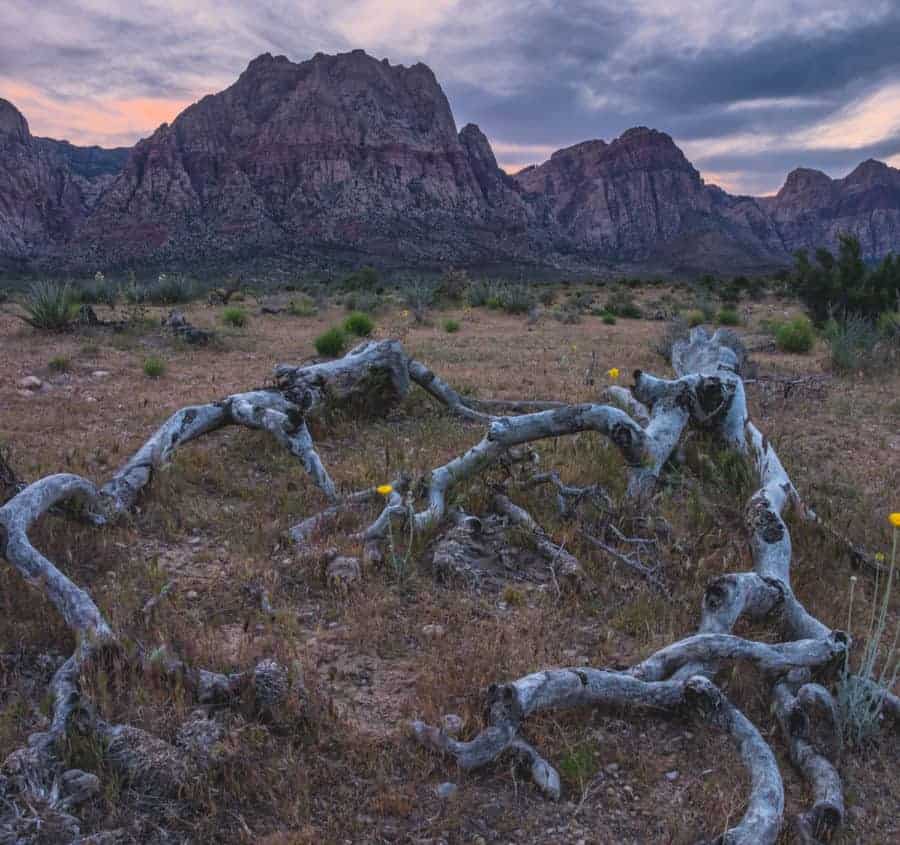
-
Peak Design Shell
My final product from Peak Design (I can't help it if they make great hiking gear)! The Peak Design Shell is a water 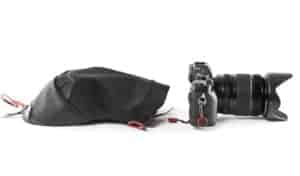 and dust-proof cover that easily rolls up and can be shoved into your backpack. While I don't often shoot in the rain, it has happened on occasion and I have been thankful to have this on me. The two other reasons I like to carry the Shell with me is I in case I do get caught in a downpour, I don't necessarily trust my backpack to keep everything dry so it is nice to have extra protection, and the second reason is for shooting waterfalls and waves. Waterfalls and waves are probably the biggest use I get out of the shell as I like to get close to the action and not have to worry about getting things too wet.
and dust-proof cover that easily rolls up and can be shoved into your backpack. While I don't often shoot in the rain, it has happened on occasion and I have been thankful to have this on me. The two other reasons I like to carry the Shell with me is I in case I do get caught in a downpour, I don't necessarily trust my backpack to keep everything dry so it is nice to have extra protection, and the second reason is for shooting waterfalls and waves. Waterfalls and waves are probably the biggest use I get out of the shell as I like to get close to the action and not have to worry about getting things too wet.
Once again, you can find it on Amazon or check out Peak Design.
-
First Aid Kit
It is smart to have a first aid kid, especially if you are going into any kind of rough terrain. I have never had to actually use my first aid kid while hiking so I skipped taking one on many trips until I got the current first aid kit I am using from Adventure Medical Kits. They have a whole line of lightweight kits specifically designed for hikers. I often just hang my kit on the outside of my bag if I need space inside my bag. I especially appreciate this when I am hiking with my young daughters. Again, you SHOULD carry a first aid kit. Hopefully, you will never need one, but if you do, you will really be happy you have one, even if it is something as minor as a blister. The Adventure Medical Kits are top notch and come at a very reasonable price. The thing I like best about the kit I use is that it is paired down to the essential things you will actually likely need while hiking and not random things you find in a lot of first aid kits. You can pick up the kit I use for $25 on Amazon.
-
Knife
I always like to have a good knife with me in case I need one for whatever reason. My personal favorite for hiking is from CRKT as I think they make a high-quality blade for the price you pay. This can be used for cooking if you are doing a long hike, cutting rope or in an emergency situation.
-
Rope
A small strand of rope is a great tool to have when hiking. It can be tied to a rock or tree to help you get up or down steep parts of a trail or help in an emergency when someone falls down a ledge and can't climb out on their own. It can also be used to secure things to your backpack if a strap or something breaks.
You can pick up the perfect size of hiking rope on Amazon for under $10.
-
Bear Spray
If you are hiking in bear country, it is worth having some bear spray. I cheaped out while hiking in Glacier National Park and did some scary hiking in the woods with little light. I would have felt much more comfortable with some bear spray after ignoring the sign that said never hike alone.
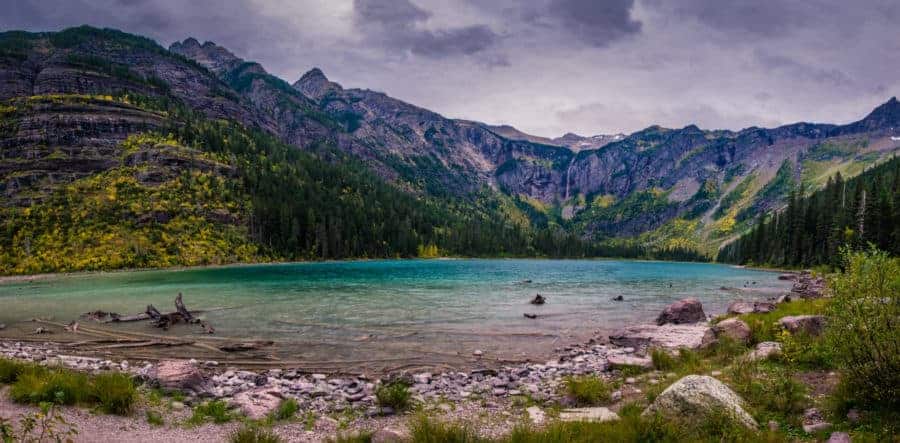
-
Headlamp
A good headlamp is a must if you are going to be hiking or shooting at night. I prefer a headlamp to a normal flashlight as it keeps your hands free to use your camera and set up your tripod. I have a couple that I use, but don't love, so I will recommend the one Jim Harmer uses. You can find it here. I spent a lot of time hiking with Jim in Glacier by the light of this head lamp and was really impressed with its performance given the great price tag.
-
Sunglasses
Sunglasses are a tough one for me because I wear regular glasses. Sometimes, if the sun is really bad, I will throw a pair of sunglasses over my glasses, but I don't like to look stupid so that is mostly when driving. Still, sunglasses can be very helpful when hiking on a sunny day so I turned to fellow writer Nathan St. Andre for his advice. He sayd to avoid sunglasses that have a yellow or blue tint. He also recommends using polarized lenses to give you a better idea what your polarizer filter will do to the scene.
-
Mountainsmith Trekker Monopod
I had never been one for a hiking stick of any kind, but I heard a number of recommendations for this combination trekker pole and monopod. I decided I would give it a try and see if it actually improved the hiking experience. I have to say, I have really enjoyed using it. I feel like I don't have much use for it on an easy hike, but anything strenuous at all can be nice with this trekker pole. It just takes a little of the burden off your legs and helps keep you moving at a good pace.
The Mountainsmith Trekker Monopod is compact as it folds into three small sections. The loose sections can be a little annoying until you figure out a good way to strap them into your bag and then they are not an issue. It is really quick to set up and is adjustable so it is comfortably even if you are really tall. I am 6'2″ and am nowhere close to the longest length on this thing. I really like the addition of a monopod on here as well. I haven't used it all that much as of yet, but I am really excited to go on a hike to see wildlife where I can have my camera attached and ready to shoot.
-
Insect Repellent, Sunscreen and Lip Balm
If you are hiking anywhere with bugs or sun, these things are essential for comfort. They are also the things I most often forget and life can get uncomfortable without them. I especially always forget insect repellent because we don't get mosquitoes in Las Vegas. Just last month, I ended up doing a solo hike around a remote mountain lake in Idaho. It all went well until the sun started to set and I was swarmed by mosquitoes. The evening quickly turned uncomfortable and left lasting effects for the next few days of hiking as well.

-
Food
I honestly never get hungry while hiking. As such, I don't usually take much if I am only going to be out for a half day or less. A granola bar is usually plenty. If I am going to be out longer than that, I add some more food. Granola bars are still my go to, but I look for something more dense like protein bars that will go a little further. I also love beef jerky because it packs protein without adding much weight. Peanuts or trail mix are a great snack to enjoy during a break in hiking. I am probably not the most nutritious eater while hiking and you should probably check out someone else's advice, but I prefer not to have to pack cooking supplies while hiking. I would rather live on protein bars and jerky for a couple days.
-
Whistle
A whistle is one of those things like a first aid kit that you hope you will never need. A whistle is so light and small, it just doesn't make sense not to have one with you. If you end up lost, injured or stuck, a whistle will help searchers find you long after your ability to yell and scream has faded. You can pick up a five pack of compact whistles for under $2 on Amazon so you have no excuse.
-
Extra batteries
When hiking, you don't have access to power easily to charge batteries so it is important to carry at least a couple extra batteries, especially if you are shooting a mirrorless system. I use these batteries from Wasabi Power and they have been great. I honestly cannot tell the difference between them and my Fujifilm batteries. It is worth the minimal size and weight to add at least two extra batteries so you don't end up hiking hours into a great location that you can't shoot because your battery dies.
-
Luminoodle
I was skeptic about the Luminoodle when I was approached to try it for hiking and camping. In the advertising I 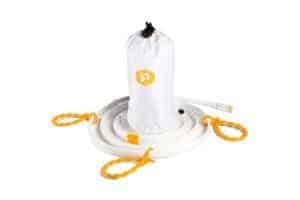 looked at, I imagined something much bulkier than what the Luminoodle actually is. This is a compact rope of lights that is not much bigger than a small flashlight, yet it can easily light up your campsite and save you from having to bring a lantern. I have absolutely loved using this thing and found more uses for it than I ever imagined. I even keep one in my wife's van for when the kids want a light because it provides a great light source for them without the annoying glare of overhead lights that blind the driver. The Luminoodle is also waterproof so it is much more durable than you would expect and you don't have to worry about taking it out in rough conditions. Finally, it plugs into a usb port, which is actually great for hiking as you can run it off a little battery back that also works for charging your phone.
looked at, I imagined something much bulkier than what the Luminoodle actually is. This is a compact rope of lights that is not much bigger than a small flashlight, yet it can easily light up your campsite and save you from having to bring a lantern. I have absolutely loved using this thing and found more uses for it than I ever imagined. I even keep one in my wife's van for when the kids want a light because it provides a great light source for them without the annoying glare of overhead lights that blind the driver. The Luminoodle is also waterproof so it is much more durable than you would expect and you don't have to worry about taking it out in rough conditions. Finally, it plugs into a usb port, which is actually great for hiking as you can run it off a little battery back that also works for charging your phone.
-
Compass
The final item I am recommending has become even more essential to me recently. I have been lost on a hike more than once, but never for more than an hour or so. I always carry a compass because I don't want to risk getting lost for longer than that. I have found myself using the compass a lot more recently since I started using the Photo Pills app. I love the night AR feature that allows you to find the milky way, but when you are off the grid, it can take some time to calibrate correctly and it is nice to have a compass to check the calibration of the app and ensure you are getting the correct data. If nothing else, you can use your compass to find the milky way as the app will tell you which direction to look.

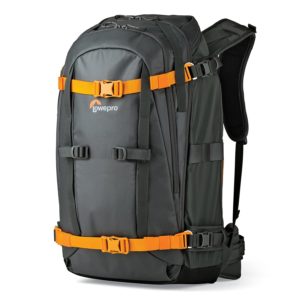
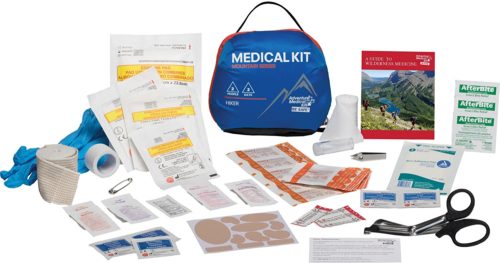

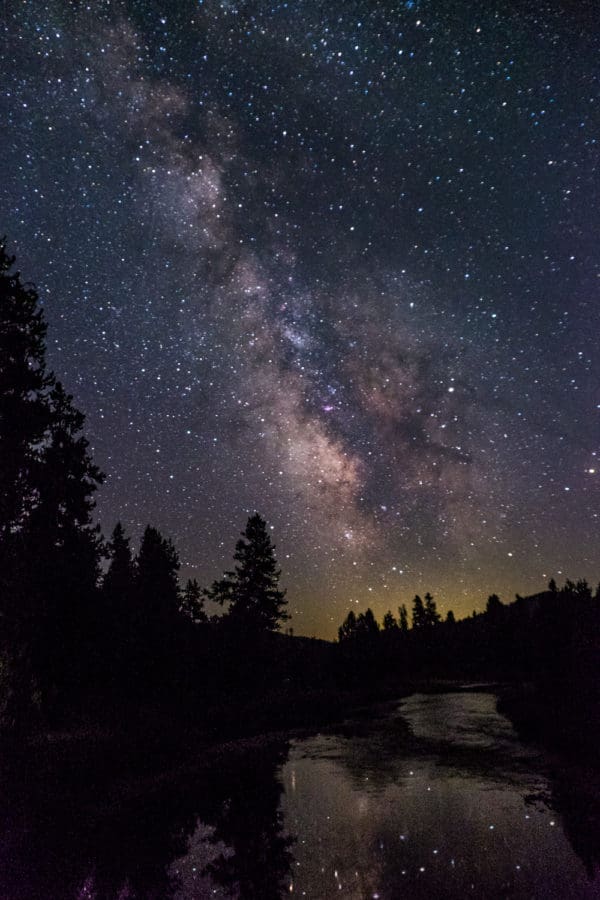
Do you use a drone , like a Mavic Pro ever ?
I have not pulled the trigger on a drone yet, but it is getting too hard to resist. Would love the Mavic for hiking.
Nicely written up. I have the same faith in Peak Design when it comes to the accessories, I don’t use their shell but the clip, leash and the slide instead of the strap although I have it and use it as backup. I definitely learned the same thing with the mattress and the pillow as well and now depending on the hike we bring a Helinox chair to sit on the end of the day. And don’t forget all the food, cooking utensils and stoves if you’re going on a multi-day hike.
Thanks for the comment. That Helinox chair looks pretty great and would have been a good addition to the article. I thought about including cooking gear, but I just don’t have much to say on it as I try to avoid hiking with cooking gear and live off protein bars if it is only going to be a few days.
No problem Brent, I’ve been hiking since I was about 17, and that includes multi-day hikes and nowadays multi-day canoe trips. you need to have more than just protein bars and in our case water purifiers/filter etc. It’s not that bad and there are many good options. It just depends how much you want to carry in. The more food you need the more of the luxury items fall off. One of the reasons I like micro-four-thirds gear. It’s much smaller for what you get with APS-C and full frame. I have no regrets on switching to it.
Hi, Brent! This is an amazing article! You put a lot of detail in there, which makes it more interesting and informative! Many hikers really struggle with choosing a right gear for their adventures. You mentioned some really quality brands here. I was wondering, in your opinion, is more money means bigger quality when it comes to gear?
thanks for the comment Nigel. In my opinion, money doesn’t necessarily accurately reflect quality. I have some gear I use where I got better quality spending $150 instead of $300. A lot of it goes into knowing the brands and the reputation for quality. That being said, quality often doesn’t come cheap. The one thing I always try to avoid is any cheap, unknown brand I find randomly on Amazon. While there can be some good cheaper brands out there, such as Leofoto and Luzid that I use, it is always a risk if you haven’t done your research.
Thank you, Brent! I hope this will help other hikers to choose right brands, including the one you mentioned. Keep writing great articles, you`re really good at it!
Thank you for the kind words!
Hey Brent,
An awesome written up from you make me feel better. I was looking for this type of content for photographer. Finally i got it. You wrote this in detail.I find out you are talking about Peak Design’s product. This is my favorite brand for camera accessories. I hope this will help other hikers to choose right brands.
Thanks Brent. This is really a written up.
Hey Brent, You put a lot of detail in there. So it’s a very informative article. Thanks for sharing. In this article I love this pictures you provide most. You prefer many brand things. Hope this will help others to choose right brands.
Thanks Andrew! Best of luck in your next adventure.